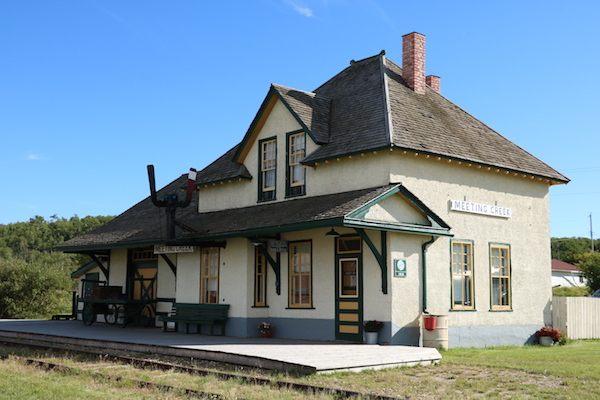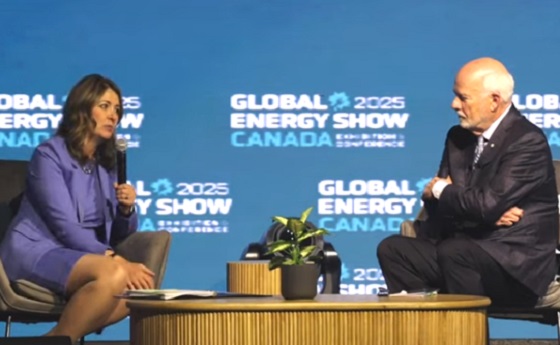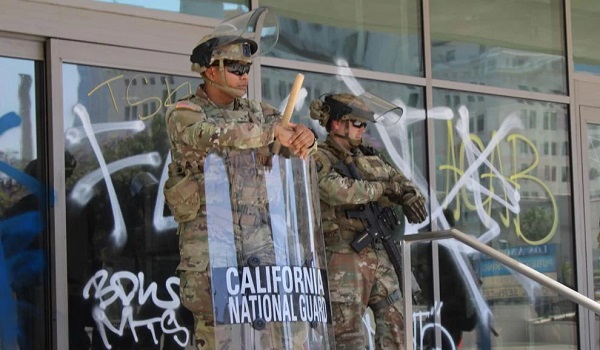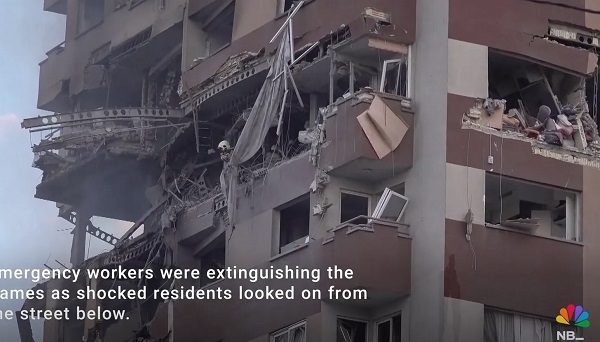Alberta
Summer Vacation Idea – Central Alberta’s collection of Train stations preserved along the Highway 56 Corridor

Article submitted by Paul O’Neil
For decades, the railroad station or “depot” was the transportation hub of many communities across North America. As the “storefront” for the railway company, the depot was the town’s gateway, handling express freight, serving travelers, and providing vital communication in an erathat is now almost forgotten. In Canada’s West, the remaining small-town depots that continue to exist are now museums, private businesses or residences, or in the worst cases have been left to deteriorate as hulks on private property.
There is however a special historical railway on the Prairies that has developed into a true “historic railway district”. A visit to the depots preserved by the Canadian Northern Society in Central Alberta provides a glimpse into the past – an entire collection of classic railroad station designs, carefully and lovingly maintained by a dedicated group of volunteers.

History Background:
Members of the Canadian Northern Society include historians, community volunteers, gardeners, and other local supporters who have since 1987 been active in the preservation of its namesake railway’s history, and in particular its depots. The Canadian Northern Railway (CNoR) traces its origins to Manitoba in 1896. Visionary founders Sir William Mackenzie and Sir Donald Mann – both instrumental as contractors in the completion of the Canadian Pacific Railway – grew the company from a modest short line between Gladstone and the Dauphin district of Manitoba into to a 9500 mile transcontinental system.
Despite the relative business success of the CNoR’s branchline network, negative financial impacts created by the First World War, together with mounting debt from the over-expansion led to the company being nationalized in late 1918. By 1924, operations in Central Alberta were amalgamated with the rival Grand Trunk Pacific Railway under the newly formed Canadian National Railways (CN) banner.
DEPOTS
Similar to other western railroads, the CNoR designed standard plans to be used at individual locations based on the size and importance of the locality to be served. In Alberta, the most common CNoR design was the combination freight and passenger “Third Class” station. Several “Second Class” depots intended primarily for divisional points were constructed, and a single-story “Fourth Class” depot design were also found. The designs were flexible enough that additions could be constructed as traffic or operations warranted. The distinctive pyramid or “semi-pyramid” roofline of a CNoR depot, a feature designed by company architect Ralph Benjamin Pratt, created a unique and pleasing image.
By the late 1960’s the depot-era on the former CNoR Battle River Subdivision (a large portion had by then been renamed the “Stettler Subdivision”) was drawing to a close. However, the presence of a branch line passenger service in the form of a Budd RDC service between Edmonton and Drumheller ensured the continued existence of several depots as passenger shelters that otherwise would most certainly face demolition. The Edmonton to Drumheller service lasted into VIA Rail Canada times until the Trudeau Government service cuts of November 1981 gutted passenger service across Canada.
ENTER THE CANADIAN NORTHERN SOCIETY
Meeting Creek, MP 21.2

My beautiful picture

By 1986, the CNoR Third Class depot at Meeting Creek was surviving on borrowed time, vandalized and yet escaping the fate of several identical structures in neighboring towns. As a result of an interest by a small group of younger railroaders and rail historians, powered perhaps by a few pints enjoyed in a Stettler pub, the Canadian Northern Society (CNoS) was soon established with the intent to save this classic structure from imminent destruction.
Armed with enthusiasm, some grant money, and the support of short-line Central Western Railway; the CNoS got to work repairing the roof, floors, rebuilding the wooden platform, painting, and replacing missing windows, doors and chimneys. By 1989 the Meeting Creek depot was resurrected from a sad state to her today’s 1940’s-era appearance.
Complimenting the station today is another vanishing prairie icon. A 1917 Alberta Pacific Grain elevator located across from the depot was purchased by CNoS from the Alberta Wheat Pool in 1992. Over the years, it too has been conserved by the Society and work continues into its second century. A second grain elevator, while privately owned, ensures that Meeting Creek continues to feature two classic prairie elevators that dominate the skyline in this picturesque location.
Donalda, MP 30.9:

9.7 miles south of Meeting Creek lies the Village of Donalda. Always an agrarian-based community, Donalda was never larger than 500 souls, and as such rated a Canadian Northern Railway “Third Class Depot”. Unfortunately, the original depot at Donalda was demolished in 1984.
Thanks to the efforts of the CNoS, the group was able to relocate an original CNoR “Fourth-Class” type depot, donated by a Saskatchewan farmer many miles to the east. All the Societyhad to do was physically move this building 700 miles from her location at Vandura, Saskatchewan to Donalda! Through fundraising and community support, the building was moved to Donalda in 1991. The depot was restored to her CN oxide red paint scheme, with cream trim on the windows and facia boards. The interior of the depot was refurbished to her heyday as a depot and is now included in the present-day collection of the Donalda & District Museum. Like Meeting Creek, a short section of original CNoR 60-pound steel main track remains preserved in front of the depot.
Warden MP 55.8:

Five miles south of Stettler is the one-time important junction of the CNoR Brazeau Subdivision, its westward extension into the coal fields at the foot of the Rockies. Originally, a “Fourth Class” station was located here, being destroyed by fire and replaced with a standard later version of the company’s “Third Class” design in 1919. This structure was sold and demolished in the 1980’s, and was recently replaced by a “representative” train order office/depot built entirely by CNoS volunteers, that features design features, artifacts, and “parts” of the original depot. It is used for educational purposes in a peaceful park-like setting along what is now short-line Alberta Prairie Railway.
Big Valley, MP 72.1:


Established in 1911, Big Valley was once hub of the division for the CNoR. By 1921 this one-time bustling terminal boasted well over 300 employees on payroll and featured a 10 stallroundhouse, coaling plant, water tank, and other terminal facilities. Big Valley’s 1912-built depot was a large “Second Class” design commonly constructed by the CNoR at divisionalpoints across the system. The main floor handled passenger and LCL business, while the second-floor housed accommodations for the agent – and later crews and offices.
The Big Valley depot was the second major conservation project for the Canadian Northern Society in 1989. Encouraged by the Village of Big Valley, CNoS began refurbishment of the station, and was able to raise funding from Alberta Historical Resources Foundation and various temporary job creation programs to restore the depot to today’s attractive 1940’s-era exterior appearance.
At the same time, short–line operator Central Western Railway was launching Alberta’s first tourist railroad service. Big Valley, like in her previous railroad life, again had the infrastructure to accommodate steam powered trains into the community. In addition, the 10-stall roundhouse,by then in ruins with only the concrete walls showing her prominence to the community was preserved as an interpretive park through the efforts of CNoS, Central Western, and the Village of Big Valley. Volunteers cleared and excavated the site, allowing the view of the ash and turntable pits, boiler room and machine shop. You can imagine the one-time bustling activity of Ten-Wheelers and Consolidations locomotives receiving service at the Roundhouse.
Big Valley today is the centerpiece of this rich CNoR heritage, plus a restored grain elevator to complete the scene of a bustling prairie railroad terminal. The Big Valley Historical Society also operates an excellent local museum in a classic garage on Railway Avenue, together with maintaining St. Edmund’s Church – a spiritual home of many of the community’s early railroaders. Serving as primary destination for Stettler based Alberta Prairie Railway, seasonal excursion trains arrive at Big Valley on a scheduled basis, where passengers spend a few hours in the community, experiencing the magic of its railway, ranching, and mining historical attractions.
Further along the line in the ghost town of Rowley is another preserved CNoR Third Class depot, built to a similar floor plan as Meeting Creek’s railway station. While not part of the Canadian Northern Society’s collection, it is certainly worth a visit while in historic “Rowleywood”.
Other Projects
In addition to its Stettler Subdivision projects, the Canadian Northern Society has and continues to support other railway preservation efforts.
Over the years the preservation of depots at Rowley, Smoky Lake, Viking, Canora in Saskatchewan, and Dauphin in Manitoba have all been supported by CNoS. A roundhouse project at the former CNoR divisional point of Hanna has also been aided by the CNoS. While the 1909 Viking depot is in fact a rival GTP station, the CNoS was instrumental in its 1991 preservation – and remarkably you can still catch a train here – with VIA Rail Canada’s flagship train “The Canadian” stopping upon request.
The CNoS collection of depots and the corresponding regional history that they represent has become part of the historical fabric of Western Canada. It is proud to have left this legacy – and its true hope is that future generations will continue to be educated by its efforts, and will perhaps contribute to the further preservation of each of these wonderful historic structures.
This summer the Canadian Northern Railway Historical Society invites you to visit these historic buildings along Alberta’s Highway 56 corridor.
Alberta
Alberta Premier Danielle Smith Discusses Moving Energy Forward at the Global Energy Show in Calgary

From Energy Now
At the energy conference in Calgary, Alberta Premier Danielle Smith pressed the case for building infrastructure to move provincial products to international markets, via a transportation and energy corridor to British Columbia.
“The anchor tenant for this corridor must be a 42-inch pipeline, moving one million incremental barrels of oil to those global markets. And we can’t stop there,” she told the audience.
The premier reiterated her support for new pipelines north to Grays Bay in Nunavut, east to Churchill, Man., and potentially a new version of Energy East.
The discussion comes as Prime Minister Mark Carney and his government are assembling a list of major projects of national interest to fast-track for approval.
Carney has also pledged to establish a major project review office that would issue decisions within two years, instead of five.
Alberta
Punishing Alberta Oil Production: The Divisive Effect of Policies For Carney’s “Decarbonized Oil”

From Energy Now
By Ron Wallace
The federal government has doubled down on its commitment to “responsibly produced oil and gas”. These terms are apparently carefully crafted to maintain federal policies for Net Zero. These policies include a Canadian emissions cap, tanker bans and a clean electricity mandate.
Following meetings in Saskatoon in early June between Prime Minister Mark Carney and Canadian provincial and territorial leaders, the federal government expressed renewed interest in the completion of new oil pipelines to reduce reliance on oil exports to the USA while providing better access to foreign markets. However Carney, while suggesting that there is “real potential” for such projects nonetheless qualified that support as being limited to projects that would “decarbonize” Canadian oil, apparently those that would employ carbon capture technologies. While the meeting did not result in a final list of potential projects, Alberta Premier Danielle Smith said that this approach would constitute a “grand bargain” whereby new pipelines to increase oil exports could help fund decarbonization efforts. But is that true and what are the implications for the Albertan and Canadian economies?
The federal government has doubled down on its commitment to “responsibly produced oil and gas”. These terms are apparently carefully crafted to maintain federal policies for Net Zero. These policies include a Canadian emissions cap, tanker bans and a clean electricity mandate. Many would consider that Canadians, especially Albertans, should be wary of these largely undefined announcements in which Ottawa proposes solely to determine projects that are “in the national interest.”
The federal government has tabled legislation designed to address these challenges with Bill C-5: An Act to enact the Free Trade and Labour Mobility Act and the Building Canada Act (the One Canadian Economy Act). Rather than replacing controversial, and challenged, legislation like the Impact Assessment Act, the Carney government proposes to add more legislation designed to accelerate and streamline regulatory approvals for energy and infrastructure projects. However, only those projects that Ottawa designates as being in the national interest would be approved. While clearer, shorter regulatory timelines and the restoration of the Major Projects Office are also proposed, Bill C-5 is to be superimposed over a crippling regulatory base.
It remains to be seen if this attempt will restore a much-diminished Canadian Can-Do spirit for economic development by encouraging much-needed, indeed essential interprovincial teamwork across shared jurisdictions. While the Act’s proposed single approval process could provide for expedited review timelines, a complex web of regulatory processes will remain in place requiring much enhanced interagency and interprovincial coordination. Given Canada’s much-diminished record for regulatory and policy clarity will this legislation be enough to persuade the corporate and international capital community to consider Canada as a prime investment destination?
As with all complex matters the devil always lurks in the details. Notably, these federal initiatives arrive at a time when the Carney government is facing ever-more pressing geopolitical, energy security and economic concerns. The Organization for Economic Co-operation and Development predicts that Canada’s economy will grow by a dismal one per cent in 2025 and 1.1 per cent in 2026 – this at a time when the global economy is predicted to grow by 2.9 per cent.
It should come as no surprise that Carney’s recent musing about the “real potential” for decarbonized oil pipelines have sparked debate. The undefined term “decarbonized”, is clearly aimed directly at western Canadian oil production as part of Ottawa’s broader strategy to achieve national emissions commitments using costly carbon capture and storage (CCS) projects whose economic viability at scale has been questioned. What might this mean for western Canadian oil producers?
The Alberta Oil sands presently account for about 58% of Canada’s total oil output. Data from December 2023 show Alberta producing a record 4.53 million barrels per day (MMb/d) as major oil export pipelines including Trans Mountain, Keystone and the Enbridge Mainline operate at high levels of capacity. Meanwhile, in 2023 eastern Canada imported on average about 490,000 barrels of crude oil per day (bpd) at a cost estimated at CAD $19.5 billion. These seaborne shipments to major refineries (like New Brunswick’s Irving Refinery in Saint John) rely on imported oil by tanker with crude oil deliveries to New Brunswick averaging around 263,000 barrels per day. In 2023 the estimated total cost to Canada for imported crude oil was $19.5 billion with oil imports arriving from the United States (72.4%), Nigeria (12.9%), and Saudi Arabia (10.7%). Since 1988, marine terminals along the St. Lawrence have seen imports of foreign oil valued at more than $228 billion while the Irving Oil refinery imported $136 billion from 1988 to 2020.
What are the policy and cost implication of Carney’s call for the “decarbonization” of western Canadian produced, oil? It implies that western Canadian “decarbonized” oil would have to be produced and transported to competitive world markets under a material regulatory and financial burden. Meanwhile, eastern Canadian refiners would be allowed to import oil from the USA and offshore jurisdictions free from any comparable regulatory burdens. This policy would penalize, and makes less competitive, Canadian producers while rewarding offshore sources. A federal regulatory requirement to decarbonize western Canadian crude oil production without imposing similar restrictions on imported oil would render the One Canadian Economy Act moot and create two market realities in Canada – one that favours imports and that discourages, or at very least threatens the competitiveness of, Canadian oil export production.
Ron Wallace is a former Member of the National Energy Board.
-

 conflict1 day ago
conflict1 day agoIran nuclear talks were ‘coordinated deception’ between US and Israel: report
-

 illegal immigration2 days ago
illegal immigration2 days agoLA protests continue as judge pulls back CA National Guard ahead of ‘No Kings Day’
-

 conflict2 days ago
conflict2 days agoIsrael strikes Iran, targeting nuclear sites; U.S. not involved in attack
-

 Alberta1 day ago
Alberta1 day agoPunishing Alberta Oil Production: The Divisive Effect of Policies For Carney’s “Decarbonized Oil”
-

 International1 day ago
International1 day agoIsrael’s Decapitation Strike on Iran Reverberates Across Global Flashpoints
-

 Energy1 day ago
Energy1 day agoCanada is no energy superpower
-

 Business2 days ago
Business2 days agoTrump: ‘Changes are coming’ to aggressive immigration policy after business complaints
-

 Alberta1 day ago
Alberta1 day agoAlberta Premier Danielle Smith Discusses Moving Energy Forward at the Global Energy Show in Calgary



